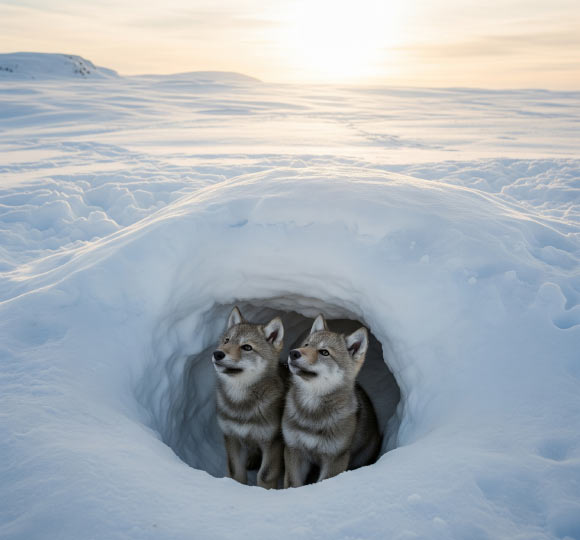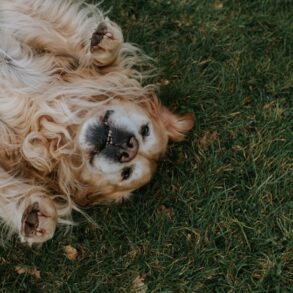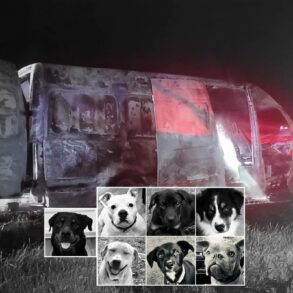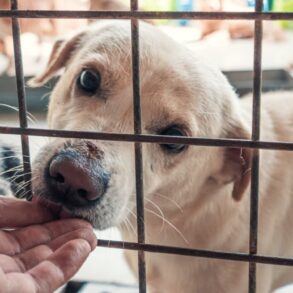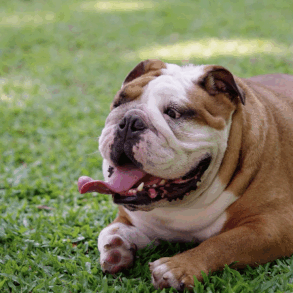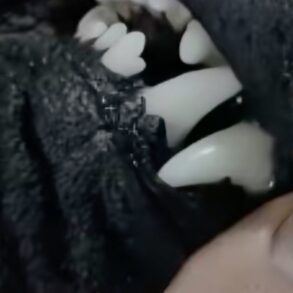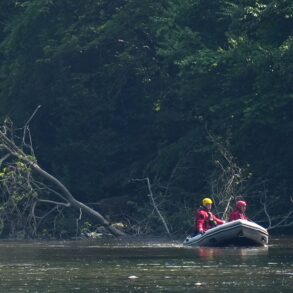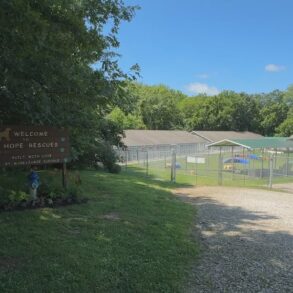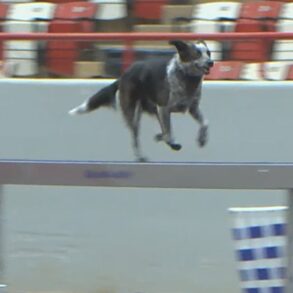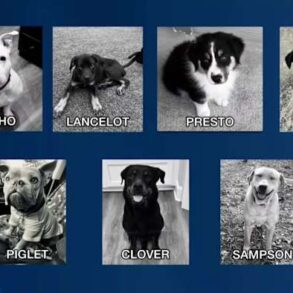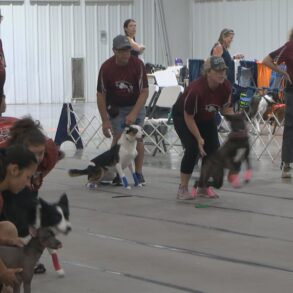The Tumat Puppies, two permafrost-preserved Late Pleistocene canids, have been hypothesized to have been littermates and early domesticated dogs due to a physical association with butchered mammoth bones. However, a new multifaceted analysis reveals that the puppies were most likely wolves who inhabited a dry and relatively mild environment with heterogeneous vegetation and consumed a diverse diet, including woolly rhinoceros.
The Tumat Puppies are two remarkably well-preserved puppy remains found in northern Siberia, about 40 km from Tumat, the nearest village.
One was found in 2011 and the other in 2015 at what’s now called the Syalakh site.
The puppies were discovered in layers of soil, preserved in ice, alongside the bones of woolly mammoths, some of which showed signs of having been burned and processed by humans.
This led scientists to wonder if the site was once used by humans to butcher mammoths, and whether the puppies might have had a connection to people, possibly as early dogs or tamed wolves that hung around humans for food.
There are no visible injuries or signs of attack to the cubs, and so they were likely to have been inside an underground den, resting after their meal, until a potential landslide collapsed their home, trapping the cubs inside.
The new study — based on genetic data from the animals’ gut contents and other chemical ‘fingerprints’ found in their bones, teeth and tissue, that the way they were living, what they were eating, and the environment they existed in — points to the puppies being wolf cubs and not early domesticated dogs.
Both were already eating solid food, including woolly rhinoceros meat and, in one case, a small bird called a wagtail.
However, their bodies still showed signs of having nursed, meaning they were likely still getting milk from their mother too.
Despite being found near human-modified mammoth bones, there was no evidence of the cubs consuming mammoth, but the piece of wooly rhinoceros skin found in the stomach of one of the cubs had not been fully digested, suggesting they died not long after their last meal.
It is thought that the wooly rhinoceros may have been a young calf, rather than a fully grown adult, and likely hunted by the adult pack and fed to the cubs, but even if this was the case, a young woolly rhinoceros would have been considerably bigger than prey modern-day wolves typically hunt.
This has led the authors to think that these Pleistocene wolves may have been somewhat bigger than the wolves of today.
Previous DNA testing suggests that the cubs most likely belonged to a wolf population that eventually died out and didn’t lead to today’s domestic dogs.
“It was incredible to find two sisters from this era so well preserved, but even more incredible that we can now tell so much of their story, down to the last meal that they ate,” said Anne Kathrine Runge, a researcher at the University of York.
“The original hypothesis that the Tumat Puppies were dogs is also based on their black fur color, which was believed to have been a mutation only present in dogs, but the Tumat Puppies challenge that hypothesis as they are not related to modern dogs.”
“Whilst many will be disappointed that these animals are almost certainly wolves and not early domesticated dogs, they have helped us get closer to understanding the environment at the time, how these animals lived, and how remarkably similar wolves from more than 14,000 years ago are to modern day wolves.”
“It also means that the mystery of how dogs evolved into the domestic pet we know today deepens, as one of our clues — the black fur color — may have been a red herring given its presence in wolf cubs from a population that is not related to domestic dogs.”
Tiny fossilized plant remains were discovered in the cubs’ stomachs, indicating that they lived in a diverse environment with a variety of plants and animals to consume, including prairie grasses, leaves from the shrub genus Dryas and willow twigs.
This suggests the landscape they inhabited included different types of habitats that could support rich and varied ecosystems.
“We know gray wolves have been around as a species for hundreds of thousands of years based on skeletal remains from paleontological sites, and researchers have done DNA testing of some of those remains to understand how the population changed over time,” said Dr. Nathan Wales, also from the University of York.
“The soft tissues preserved in the Tumat Puppies, however, give us access to other ways of investigating wolves and their evolutionary line.”
“We can see that their diets were varied, consisting of both animal meat and plant life, much like that of modern wolves, and we have an insight into their breeding behaviors too.”
“The pair were sisters and likely being reared in a den and cared for by their pack — all common characteristics of breeding and raising of offspring in wolves today.”
“Today, litters are often larger than two, and it is possible that the Tumat Puppies had siblings that escaped their fate.”
“There may also be more cubs hidden in the permafrost or lost to erosion.”
“The hunting of an animal as large as a wooly rhinoceros, even a baby one, suggests that these wolves are perhaps bigger than the wolves we see today, but still consistent in many ways, because wolves still tend to hunt easy prey while some of the pack is engaged in cub rearing.”
The findings appear in the journal Quaternary Research.
_____
Anne Kathrine Wiborg Runge et al. Multifaceted analysis reveals diet and kinship of Late Pleistocene ‘Tumat Puppies.’ Quaternary Research, published online June 12, 2025; doi: 10.1017/qua.2025.10
This post was originally published on this site be sure to check out more of their content.




